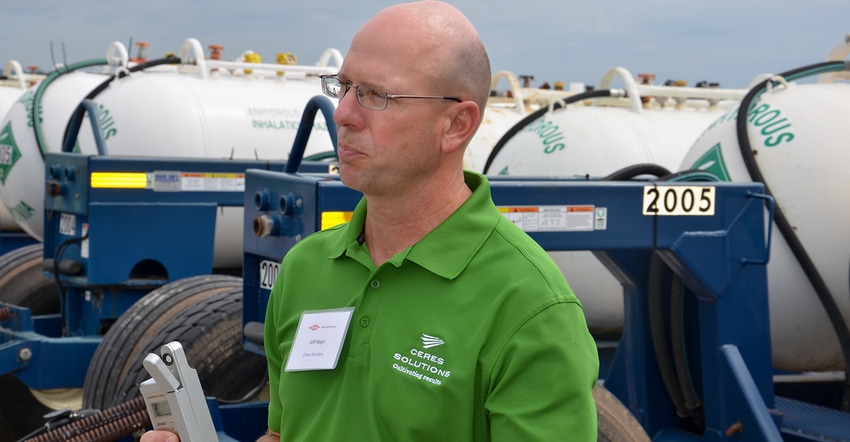
The goal of target practice is to improve your aim. If you’ve ever shot at the bull’s-eye with a gun or a bow and arrow, you know it’s difficult to hit the center every time. Agronomists often say the same is true of zeroing in on the most economical nitrogen rate for corn. Some believe if you can land somewhere in the center circle of the target, you’re doing the best you can.
So many outside factors influence nitrogen management, including soil type and weather, notes Jeff Nagel, a certified crop adviser with Ceres Solutions, based in Lafayette. This year is a perfect example, he notes. Big rains early in the season may have left you wondering how much N remained if you had already applied it. There are methods to help determine how much N is left, but each has its limitations.
Here are Nagel’s thoughts about these methods and nitrogen management in a season like 2017.
• Pre-sidedress nitrogen test. “We don’t even see our customers who apply manure using this test very much,” Nagel says. “That is where it should be most accurate. The problem is that to get a good, representative test, you need to pull 15 to 20 cores to represent 15 to 20 acres.
“It’s time-consuming, and tests cost money. If we use it, we target areas where we suspect N loss rather than using it on an entire field.”
• SPAD chlorophyll meter. These have been around for several years, and a few agronomists use them. However, they’re expensive, listing at about $2,600. The object is to estimate the amount of chlorophyll in the leaf by gauging color.
“The biggest problem with these and similar methods is that you need a nitrogen-rich comparison strip within the field to calibrate,” Nagel says. “Few farmers apply a high enough N rate on a strip for good calibration.”
• Fall nitrogen application. There are some heavier soils in the area Ceres Solutions serves where it still makes sense to apply anhydrous ammonia in the fall, as long as it contains N-Serve, a nitrogen stabilizer, Nagel says. That assumes you apply later in the season, once soil temperatures cool down.
Fall application typically isn’t practical south of Interstate 70 because soil temperatures remain high enough even late in the fall to allow N conversion to a form that can be lost. It’s also not applicable on sandy soils.
• Split applications. The main reason Ceres Solutions outlets aren’t converting to late-season N application with Y-Drops as a planned practice is the time factor, Nagel notes. “There are just too many acres for us to get over in a short amount of time,” he says. “It’s a good option for rescue situations.”
• Early sidedress application. “Many customers in some of our areas want to sidedress when corn is at the two-leaf stage, or V2,” Nagel says. “There is application equipment made to do that efficiently.
“When you apply liquid nitrogen that early, we recommend adding Instinct as a stabilizer. It’s more like a spring sidedress application than a true sidedress at V6 or V7, when corn is ready to take up more N.”
About the Author(s)
You May Also Like




